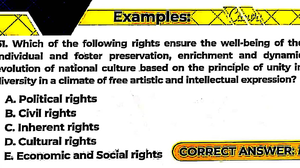- Information
- AI Chat
Was this document helpful?
BAM040 SAS#24 (Quiz 6) - Hfhff
Course: Accounting (ACC 156)
180 Documents
Students shared 180 documents in this course
University: University of Iloilo - PHINMA
Was this document helpful?

BAM 040: Managerial Economics
SAS Module #24
Name:_____________________________________________________________
_
Section: ____________
Schedule:_____________________________________
Permit number:
_______
Date:_______________
QUIZ # 6
Test I. True of False.
Direction: Write the word TRUE if the statement is
correct, otherwise write the word FALSE before the
number.
1. A legal barrier creates a natural monopoly. F
2. A firm experiences economies of scale along a
downward-sloping long-term average total cost
curve.T
3. A monopoly always charges all customers the
same price.F
4. For a single-price monopoly, marginal revenue
exceeds price.F
5. Marginal revenue is always positive for
monopoly.F
6. A single-price monopoly maximizes profit by
producing the quantity at which marginal
revenue equals marginal cost.T
7. A monopoly charges a higher price than a
perfectly competitive industry.T
8. A monopoly redistribute consumer surplus so that
consumer gain and the producer loses.F
9. The buyer of a monopoly always makes an
economic profit.F
10. Price discrimination lowers a firm’s profit.F
11. Price discrimination converts producer surplus
into consumer surplus.F
12. With perfect price discrimination, the firm
produces the efficient quantity of output and has
a larger profit
that it would if it did not ;price discriminate.T
13. A firm in a monopolistic competition faces a
downward-sloping demand curve.T
14. The larger the four-firm concentration ratio. The
more competitive the industry.F
15. A firm in monopolistic competition can make an
economic profit in the short run.T
16. In a broader view of efficiency, monopolistic
competition brings gains to consumers.T
17. Firms in monopolistic competition innovate without
regard to cost.F
18. Firms in monopolistic often undertake extensive
advertising.T
19. Because advertising increase the demand for a
firm’s product, increasing the amount of advertising
shifts the firm’s cost curves downward.F
20. Whether monopolistic competition is efficient
depends on the value people place on product variety.T
21. Oligopoly is a market in which a small number of
firms compete.T
22. The aim of a cartel is to lower price, increase
output, and increase economic profit. F
23. In a duopoly, the highest price that the firms might
set is the perfectly competitive price.F
24. A duopoly is currently making, in total, the same
economic profit as a monopoly. If one firm increases its
output, the economic profit of the other firm increases.F
25. A duopoly’s total profit is the largest when it
produces more than the monopoly level of output.F
26. Products sold in purely competitive type of business
are similar but not identical. F
27. In pure competition, firms have the power to
determine the price of their product. F
28. It is difficult to enter in a purely competitive type of
business because it requires a huge capitalization. F
29. Barriers to entries are considered obstacles when
one decides to start his own business. T
30. Sellers in a purely competitive markets compete by
quality only. F
31. An example of a purely competitive type of business
are jeepneys with different routes. F
32. In monopolistic competition, products sold in the
market are identical/homogeneous. F
33. Brand and mixture is an example of product
differentiation in monopolistic competition. T
34. In monopolistic competition, consumers always
prefer the price over brand or quality. F
35. If prices decrease in a purely competitive type of
business, consumers should expect better product
quality. F
Test II. Multiple Choice. Write the letter of your
answer before the given number. USE CAPITAL
LETTERS ONLY.
1. A monopoly market has
A. a few firms
B. A single firm
C. two dominating firms in the market
D. only two firms in it.
2. Two types of barriers to entry are called _____
barriers to entry and _____ barriers to entry
A. legal; Illegal C. natural; illegal.
B. natural; legal D. natural; rent seeking
3. A natural monopoly is one that arises from
A. patent law
B. Copyright law
C. a firm buying all of a natural resource
D. economies of scale
4. A legal barriers is created when a firm
A. has economies of scale, which allow it to
1
This document and the information thereon is the property of PHINMA Education
Students also viewed
- BAM 040 P1 Exams - Vvcf
- ACC 156 SAS 7 - concept notes and activities with answer keys
- ACC 156 SAS 5 - concept notes and activities with answer keys
- ACC 156 SAS 3 - concept notes and activities with answer keys
- ACC 156 SAS 4 - concept notes and activities with answer keys
- ACC 156 SAS 2 - concept notes and activities with answer keys





